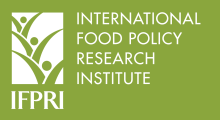Resource information
In the last 30 years, palm oil production has known a ninefold increase, with almost all production growth concentrated in Malaysia and Indonesia. Several public reports have associated the palm oil boom with extensive deforestation, often pointing to the increase in biofuel demand in developed nations as a main driver of this phenomenon. Other demand drivers, especially as related to the food sector, have not been studied as much. In particular, regulations on genetically modified (GM) food in European nations and on trans fats in a number of developed countries have reportedly induced food companies to switch from soybean oil to palm oil and could therefore have contributed to additional demand for palm oil. This article provides a first analysis of the drivers of growth in palm oil production during the 1980–2010 boom, using a price dynamics analysis of the markets for palm oil, soybean oil, and crude oil. Soybean oil is selected as the leading vegetable oil in food markets, and crude oil is taken to represent the energy sector. We estimate two models of the oil price system: a vector auto regression model that treats all three prices as stationary and a vector error correction model that allows co-integration among the three prices.


